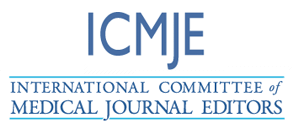Bacteremia due to Serratia rubiadae
DOI:
https://doi.org/10.55677/IJCSMR/V3I7-01/2023Keywords:
Serratia rubidaea, bacteremiaAbstract
Introduction: Serratia rubidaea is a gram-negative bacillus. it is an opportunistic pathogen bacterium rarely isolated in humans, usually found in the respiratory tract, bile , stools or wounds, but also in the blood.
Case report: 40-years-old patient followed for a currently relapsing lymphoma, hospitalized to receive a salvage treatment. The patient had an arterial catheter in place two weeks previously. Four blood cultures were positive for S. rubidaea within the first 48 hours. The clinical and biological evolution were favorable after the establishment of adequate antibiotic therapy according to the results of the antibiogram.
Discussion and conclusion: S. rubidaea infections are exceptional. the bacteraemic form is rarely described. This bacterium is most often isolated from the respiratory tract. Adequate antibiotic therapy after carrying out an antibiogram allowed a favorable evolution of the patient then a better support.
References
Grimont, P. A. D., and F. Grimont. 1984. Genus VIII. Serratia Bizio 1823,288 Al, p. 477–484. In N. R. Krieg and J. G. Holt (ed.), Bergey’s manual of systematic bacteriology, vol. 1. The Williams & Wilkins Co., Baltimore.
Grimont, P. A. D., T. A. Jackson, E. Ageron, and M. J. Noonan. 1988. Serratia entomophila sp. nov. associated with amber disease in the New Zealand grub Costelytra zealandica. Int. J. Syst. Bacteriol. 38:1–6.
Outbreaks of Serratia marcescens and Serratia rubidaea bacteremia in a central Kathmandu hospital following the 2015 earthquakes .Abhilasha Karkeya,b,c,
Farmer, J. J., III, B. R. Davis, F. W. Hickman-Brenner, A. McWhorter, G. P. Huntley Carter, M. A. Asbury, C. Riddle, H. G. Wathen Grady, C. Elias, G. R. Fanning, A. G. Steigerwalt, C. M. O’Hara, G. K. Morris, P. B. Smith, and D. J. Brenner. 1985. Biochemical identification of new species and biogroups of Enterobacteriaceae isolated from clinical specimens. J. Clin. Microbiol. 21:46–76.
Ewing WH, Davis BR, Fife MA, Lessel EF. Biochemical characteriza- tion of Serratia liquefaciens (Grimes and Hennerty) Bascomb et al. (For- merly Enterobacter liquefaciens) and Serratia rubidaea comb. Nov. and designation of type and neotype strains. Int J Syst Bacteriol 1973;32: 217–25.
D.Gentille .2016 Bacteriemia por Serratia rubidaea con fenotipo atípico de resistencia a quinolonas
Ursua PR, Unzaga MJ, Melero P, Iturburu I, Ezpeleta C, Cisterna R. Ser- ratia rubidaea as an invasive pathogen. J Clin Microbiol 1996;34:216–7.
Saito, H., L. Eting, G. P. Bodey, and P. Berkey. 1989. Serratia bacteremia: review of 118 cases. Rev. Infect. Dis. 11:912–920.
Parment, P. A., J. Ursing, and B. Palmer. 1984. Serratia rubidaea isolated from a silastic foam dressing. Infection 12:268–269.
Downloads
Published
How to Cite
Issue
Section
License
Copyright (c) 2023 International Journal of Clinical Science and Medical Research

This work is licensed under a Creative Commons Attribution 4.0 International License.












